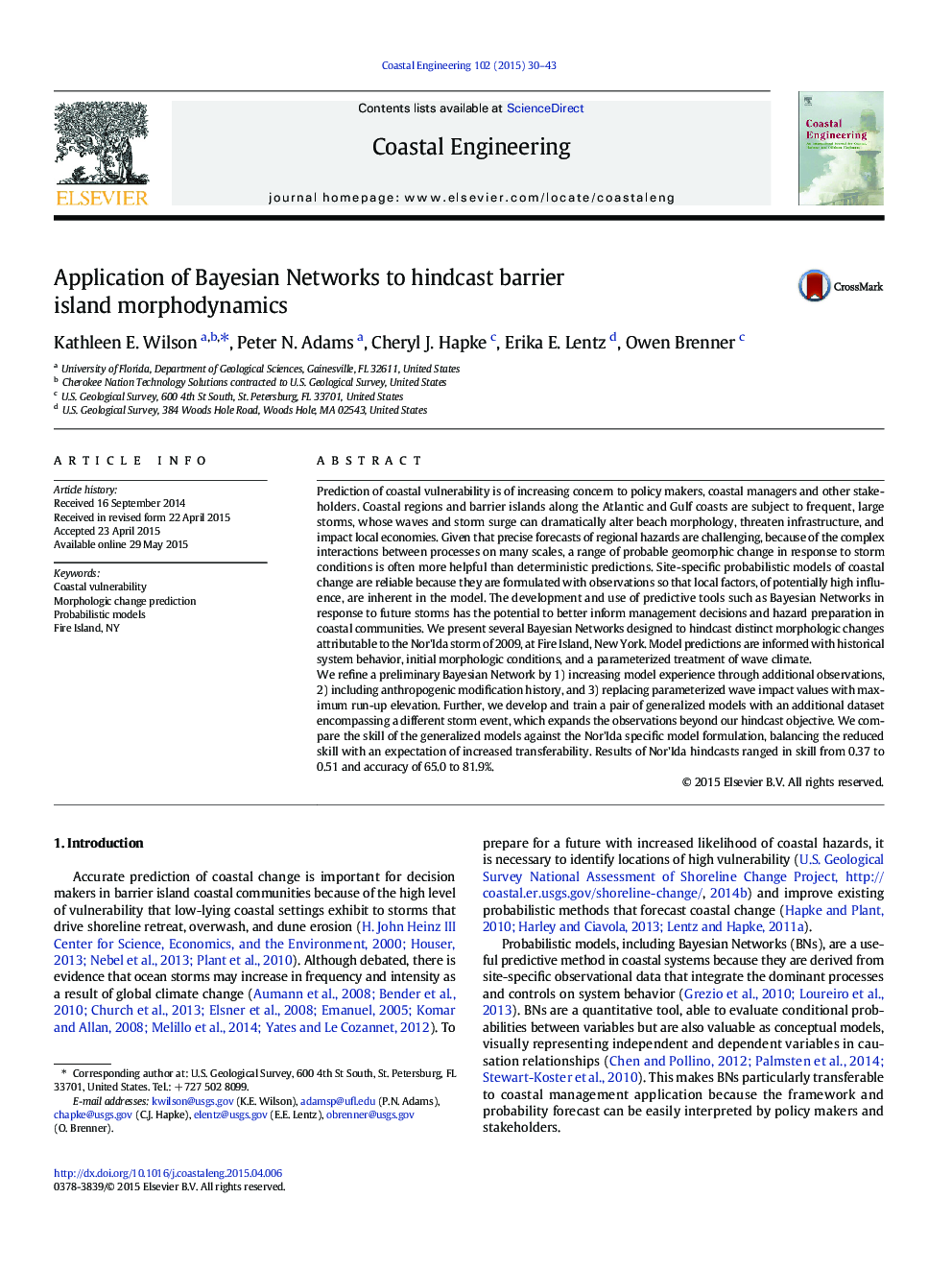| کد مقاله | کد نشریه | سال انتشار | مقاله انگلیسی | نسخه تمام متن |
|---|---|---|---|---|
| 1720623 | 1520352 | 2015 | 14 صفحه PDF | دانلود رایگان |
• Bayesian models were developed to hindcast barrier island geomorphic change.
• Data from Fire Island, New York, USA were used in model calibration and evaluation.
• Sub-aerial beach volume change was hindcast with up to 81.9% accuracy.
• Maximum run-up was a more influential hydrodynamic forcing for accurate predictions.
• Representing human alteration using a beach nourishment index improved model skill.
Prediction of coastal vulnerability is of increasing concern to policy makers, coastal managers and other stakeholders. Coastal regions and barrier islands along the Atlantic and Gulf coasts are subject to frequent, large storms, whose waves and storm surge can dramatically alter beach morphology, threaten infrastructure, and impact local economies. Given that precise forecasts of regional hazards are challenging, because of the complex interactions between processes on many scales, a range of probable geomorphic change in response to storm conditions is often more helpful than deterministic predictions. Site-specific probabilistic models of coastal change are reliable because they are formulated with observations so that local factors, of potentially high influence, are inherent in the model. The development and use of predictive tools such as Bayesian Networks in response to future storms has the potential to better inform management decisions and hazard preparation in coastal communities. We present several Bayesian Networks designed to hindcast distinct morphologic changes attributable to the Nor'Ida storm of 2009, at Fire Island, New York. Model predictions are informed with historical system behavior, initial morphologic conditions, and a parameterized treatment of wave climate.We refine a preliminary Bayesian Network by 1) increasing model experience through additional observations, 2) including anthropogenic modification history, and 3) replacing parameterized wave impact values with maximum run-up elevation. Further, we develop and train a pair of generalized models with an additional dataset encompassing a different storm event, which expands the observations beyond our hindcast objective. We compare the skill of the generalized models against the Nor'Ida specific model formulation, balancing the reduced skill with an expectation of increased transferability. Results of Nor'Ida hindcasts ranged in skill from 0.37 to 0.51 and accuracy of 65.0 to 81.9%.
Journal: Coastal Engineering - Volume 102, August 2015, Pages 30–43
